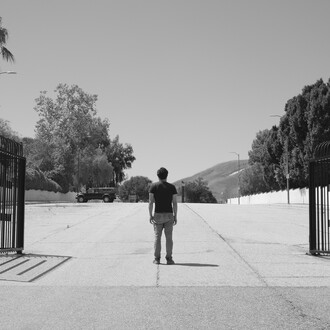On Friday, the 31 of August, Galerie Russi Klenner is pleased to present Divine cargo, the second solo exhibition of new paintings by gallery artist Ross Taylor.
Ross Taylor’s work operates in a liminal space where production and consumption merge. Through painting, performance, and bookmaking, he explores the ambiguity of the creative process, a terrain shaped by habits and indecision where conventional methods give way to the unidentifiable and instinctual.
The exhibition centers on the idea that some form of “divine cargo,” something special and precious, must be delivered safely to somewhere, or someone. The artist guides the viewer outward to the edge of town on a visionary mission, propelled by behaviors that belong to the margins of the day: to pick and scratch, wait and stare, to let attention drift from the matter at hand. For Taylor, the “special material” being carried is habit itself. This is work made from internal mutterings and ruminating thoughts, from the periphery of daily life, where inbuilt fictions collide and hallucinations emerge.
Growing up on the outskirts of Northwest London, wedged between Heathrow Airport, cement factories, HS2 construction sites, and endless housing estates, Taylor developed a practice of nocturnal wandering. These habits later revealed themselves as formative psychogeographical meanderings that became imprinted on this body of work, affectionate portraits that embody places where characters merge with landscape to become one. Drawing from Irish and British folklore, particularly the Púca, a solitary spirit who wanders the outskirts and moves between worlds, Taylor explores how costumes allow beings to be seen and unseen across different realities. In his paintings, garments carry information: signs, symbols, patterns that function as a cadence or accent revealing intent, origin, and class, simultaneously revealing and concealing aspects of the self.
Influenced by the magical thinking that seeped into Renaissance London, Taylor has become obsessed with Shakespeare’s A midsummer night’s Dream, where ordinary people become magical upon entering the woods. This transformation echoes his early experiences with hallucinatory drugs on long walks to unfamiliar places. The suburban fringe becomes an enchanted threshold. As a wanderer of the night found on the outskirts of town who can move between this world and the other, Taylor depicts the idea of a play within a play, where ordinary people are turned into something magical once entering an alter ego world. Figures appear in states of ecstasy or manic hand movements, caught in compulsive actions that resist rational explanation. The artist assumes the position of the nocturnal wanderer, giving himself over to bring forth alter personas of an alternate reality, becoming, in essence, the Púca itself. Here, at the edge of town, the cargo reaches its uncertain destination.
(Text by Emanuela Anders)














